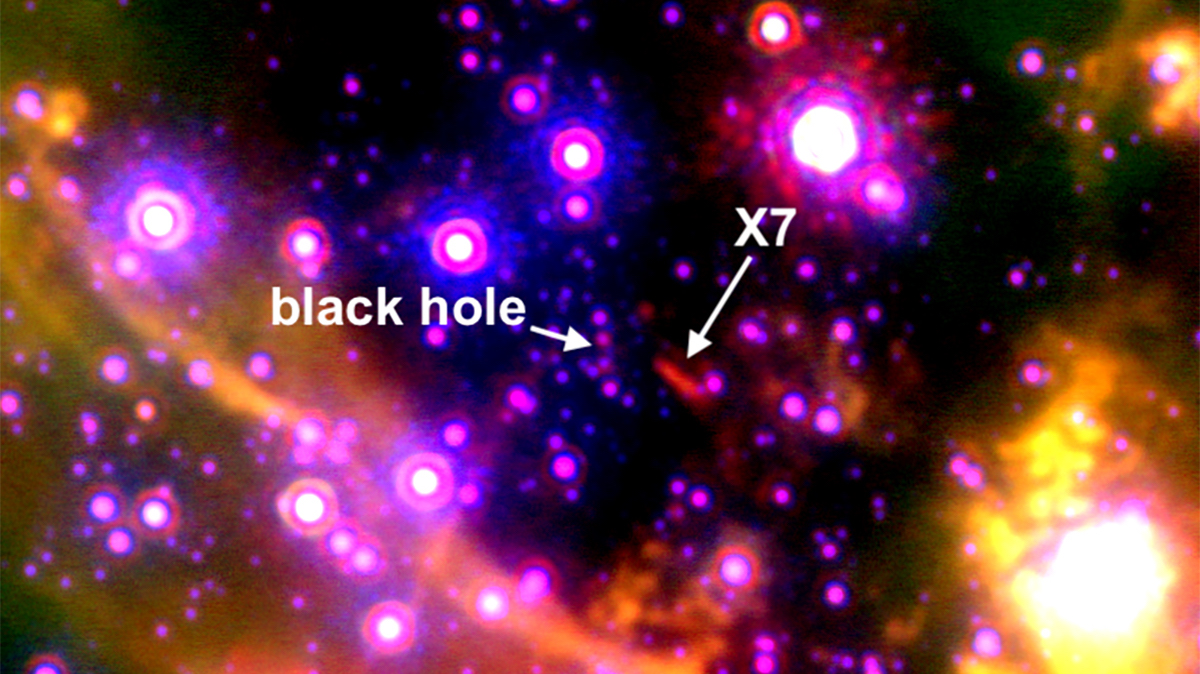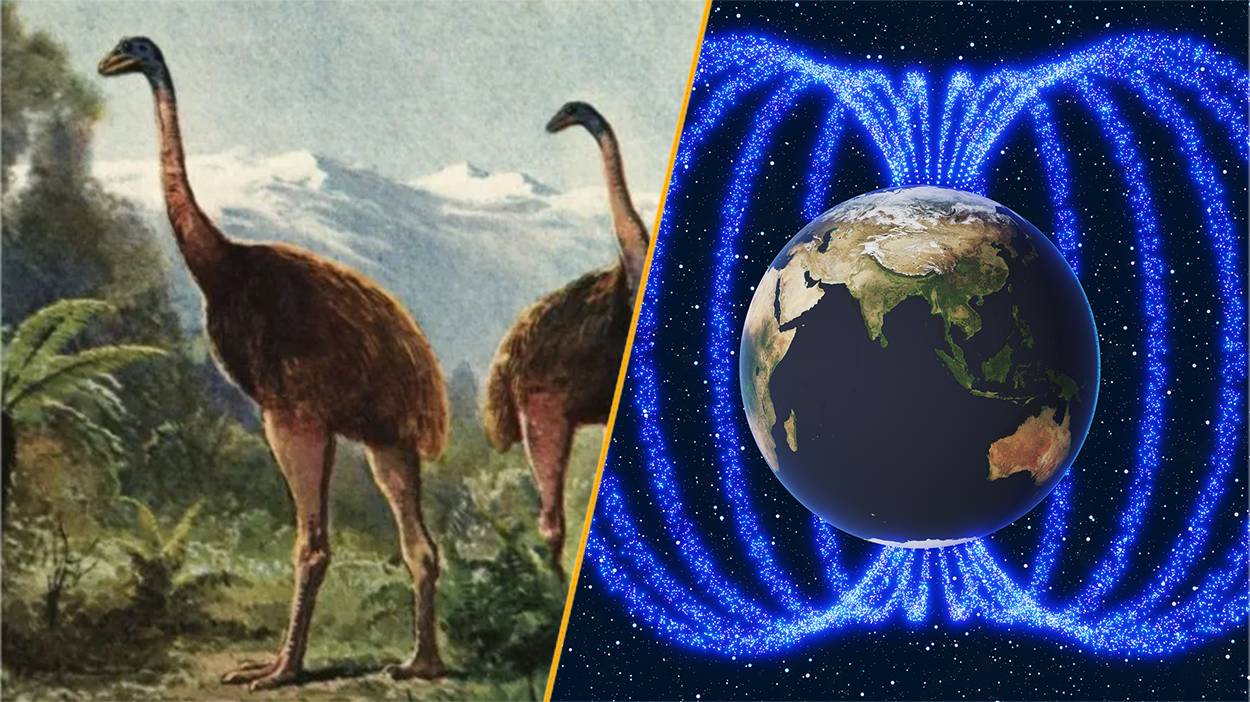A mysterious object is being sucked into our galaxy's black hole. Now, we may know what it is.
A strange blob has been seen rapidly circling our galaxy's central black hole. Now, astronomers have identified it as the exploded debris from two merging stars.

A mysterious object that has been slowly drifting toward the center of the Milky Way's supermassive black hole could be the exploded remnants of two colliding stars, a new study suggests.
The strange blob, named X7, has a mass of around 50 Earths and is moving at speeds of up to 700 miles per second (1,127km/s) as it spirals into our galaxy's central black hole, getting yanked and stretched by powerful tidal forces as it falls.
Now, by analyzing 20 years of observational data, astrophysicists finally have a theory for what the blob is: a cloud of ejected debris from a head-on collision between two merging stars. They published their findings Feb. 21 in The Astrophysical Journal.
"No other object in this region has shown such an extreme evolution," lead author Anna Ciurlo, an assistant researcher at the University of California, Los Angeles, said in a statement. "It started off comet-shaped and people thought maybe it got that shape from stellar winds or jets of particles from the black hole. But as we followed it for 20 years we saw it becoming more elongated. Something must have put this cloud on its particular path with its particular orientation."
Black holes are born from the collapse of giant stars and grow by ceaselessly gorging on gas, dust, stars and other black holes in the star-forming galaxies that contain them. This ravenous eating, alongside mergers with other black holes, can cause the cosmic monsters to expand to masses that range from hundreds of thousands to billions of times the mass of the sun, turning them into the gigantic supermassive black holes that are usually found in the centers of galaxies.
X7 is on a 170-year-long elliptical orbit around the Milky Way's supermassive black hole, called Sagittarius A*. Changes to the shape of the debris cloud, however, suggest that it won't make it that far. Instead, it will be ripped apart by the ginormous black hole's powerful gravity, stretching out into a long, "spaghettified" noodle of matter before being swallowed up for good.
Get the world’s most fascinating discoveries delivered straight to your inbox.
The researchers propose that X7 is a blob of gas and dust from the merger of two stars — an event they say is very common, especially around black holes. As the stars collided and combined, they threw out a cloud of burning plasma that later became the giant blob.
"This is a very messy process: The stars circle each other, get closer, merge, and the new star is hidden within a cloud of dust and gas," Ciurlo said. "X7 could be the dust and gas ejected from a merged star that's still out there somewhere."
To confirm their theory and to witness the extreme changes to the blob as it nears the end of its life, the astronomers will continue to study the cloud for more clues.
"Continued monitoring of X7 will allow us to closely witness these extreme changes," the researchers wrote in the paper, "ending with the ultimate tidal dissipation of the remnants of this intriguing structure."

Ben Turner is a U.K. based staff writer at Live Science. He covers physics and astronomy, among other topics like tech and climate change. He graduated from University College London with a degree in particle physics before training as a journalist. When he's not writing, Ben enjoys reading literature, playing the guitar and embarrassing himself with chess.
